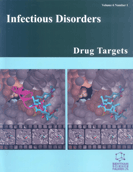Abstract
Surgery associated with trauma and soft tissue injuries after surgery significantly activates the systemic immune response. If an infection after surgery occurs, the response is even stronger. Due to spontaneous activation of immune response and elevated biomarkers for sepsis and cytokines, posttraumatic complications such as new-coming postoperative infections are difficult to diagnose. Sepsis as systemic inflammatory response syndrome (SIRS) rapidly progresses through severe sepsis to septic shock and organ failure, and with no applied antibiotic treatment, the disease often ends at death of the patients. In the treatment of non-surgery patients, the biomarkers like white cell blood count, Creactive protein (CRP) or procalcitonin (PCT) proved to be useful in sepsis recognition. However, diagnostics after surgeries are more complicated and these biomarkers are not ideal. The solution is a sepsis biomarker, which would have high sensitivity and specificity, that can improve diagnostic accuracy of sepsis, should also be measured easily by the patients, and should not be too expensive. We think more sensitive and specific biomarkers such as presepsin (sCD14-ST) or CD64 index on neutrophils could be useful. A diagnosis of sepsis should be based on clinical signs, and clinicians should use biomarker that is not only most sensitive and specific but also is cost effective. Furthermore, confirmation of the bacterial or fungal infection with blood cultures or with the use of broad range polymerase chain reaction (PCR), when culturing is impossible, should be performed.
Keywords: Bacterial infection, biomarkers, major surgery, sepsis.
Infectious Disorders - Drug Targets
Title:Effective Strategies for Diagnosis of Systemic Inflammatory Response Syndrome (SIRS) due to Bacterial Infection in Surgical Patients
Volume: 15 Issue: 1
Author(s): David Stubljar and Miha Skvarc
Affiliation:
Keywords: Bacterial infection, biomarkers, major surgery, sepsis.
Abstract: Surgery associated with trauma and soft tissue injuries after surgery significantly activates the systemic immune response. If an infection after surgery occurs, the response is even stronger. Due to spontaneous activation of immune response and elevated biomarkers for sepsis and cytokines, posttraumatic complications such as new-coming postoperative infections are difficult to diagnose. Sepsis as systemic inflammatory response syndrome (SIRS) rapidly progresses through severe sepsis to septic shock and organ failure, and with no applied antibiotic treatment, the disease often ends at death of the patients. In the treatment of non-surgery patients, the biomarkers like white cell blood count, Creactive protein (CRP) or procalcitonin (PCT) proved to be useful in sepsis recognition. However, diagnostics after surgeries are more complicated and these biomarkers are not ideal. The solution is a sepsis biomarker, which would have high sensitivity and specificity, that can improve diagnostic accuracy of sepsis, should also be measured easily by the patients, and should not be too expensive. We think more sensitive and specific biomarkers such as presepsin (sCD14-ST) or CD64 index on neutrophils could be useful. A diagnosis of sepsis should be based on clinical signs, and clinicians should use biomarker that is not only most sensitive and specific but also is cost effective. Furthermore, confirmation of the bacterial or fungal infection with blood cultures or with the use of broad range polymerase chain reaction (PCR), when culturing is impossible, should be performed.
Export Options
About this article
Cite this article as:
Stubljar David and Skvarc Miha, Effective Strategies for Diagnosis of Systemic Inflammatory Response Syndrome (SIRS) due to Bacterial Infection in Surgical Patients, Infectious Disorders - Drug Targets 2015; 15 (1) . https://dx.doi.org/10.2174/1871526515666150320161804
| DOI https://dx.doi.org/10.2174/1871526515666150320161804 |
Print ISSN 1871-5265 |
| Publisher Name Bentham Science Publisher |
Online ISSN 2212-3989 |
 92
92 4
4 1
1
- Author Guidelines
- Bentham Author Support Services (BASS)
- Graphical Abstracts
- Fabricating and Stating False Information
- Research Misconduct
- Post Publication Discussions and Corrections
- Publishing Ethics and Rectitude
- Increase Visibility of Your Article
- Archiving Policies
- Peer Review Workflow
- Order Your Article Before Print
- Promote Your Article
- Manuscript Transfer Facility
- Editorial Policies
- Allegations from Whistleblowers
- Announcements
Related Articles
-
Angiogenesis Inhibitors and Radiation in Multimodality Cancer Therapy: Preclinical and Clinical Studies
Current Angiogenesis (Discontinued) Application of Gene Therapy in Diabetes Care
Infectious Disorders - Drug Targets A Review of Methods and Tools for Database Integration in Biomedicine
Current Bioinformatics Identification of a Novel Intestinal First Pass Metabolic Pathway: NQO1 Mediated Quinone Reduction and Subsequent Glucuronidation
Current Drug Metabolism Antiangiogenic Therapy in Malignant Glioma: Promise and Challenge
Current Pharmaceutical Design PEDF in Angiogenic Eye Diseases
Current Molecular Medicine Inhibitory Effect of Fruit Juices on the Doxorubicin Metabolizing Activity of Carbonyl Reductase 1
Drug Metabolism Letters Alternative Use of Bisphosphonate Therapy for Rheumatic Disease
Current Pharmaceutical Design Graphical Abstracts
Current Nanoscience Preventive Antidepressant use in Patients with Hepatitis C Treated with Interferon-Alfa: a Systematic Review
Current Psychiatry Reviews A Therapeutic Target of Cerebral Hemorrhagic Stroke: Matrix Metalloproteinase- 9
Current Drug Targets Breaking the DNA Damage Response via Serine/Threonine Kinase Inhibitors to Improve Cancer Treatment
Current Medicinal Chemistry Unique Structural Motif Supports Mannosylphospho Dolichol Synthase: An Important Angiogenesis Regulator
Current Drug Targets Psychotropics and Methadone in Acquired Long QT Syndrome
Current Psychopharmacology Developmental Immunotoxicity (DIT) in Drug Safety Testing: Matching DIT Testing to Adverse Outcomes and Childhood Disease Risk
Current Drug Safety Lipidomics as Tools for Finding Biomarkers of Intestinal Pathology: From Irritable Bowel Syndrome to Colorectal Cancer
Current Drug Targets Chromosomal Translocations as Biomarkers in Leukemia Diagnosis and Pharmacogenomics
Recent Patents on Biomarkers Nanotechnology Based Diagnostic and Therapeutic Strategies for Neuroscience with Special Emphasis on Ischemic Stroke
Current Medicinal Chemistry The Nuclear Molecular Imaging of Protein Brain Receptors in Chronic Pain
Current Protein & Peptide Science T-Lymphocytes: A Target for Stimulatory and Inhibitory Effects of Zinc Ions
Endocrine, Metabolic & Immune Disorders - Drug Targets


























